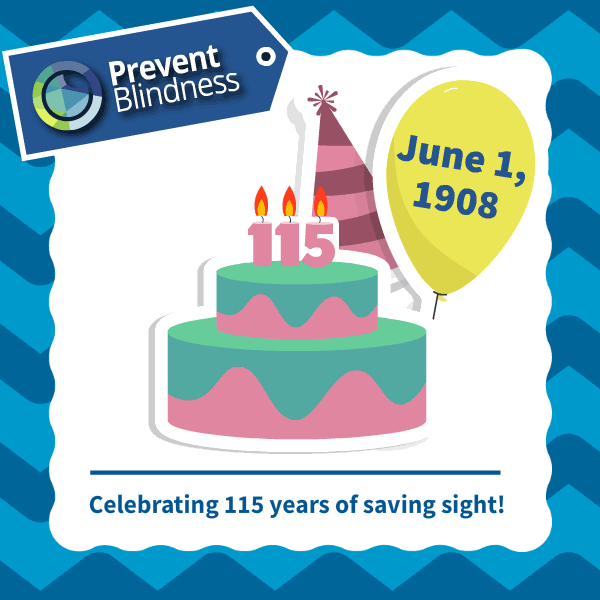In 1908, spurred to action after learning that 30% of blindness in newborns was easily preventable, volunteers banded together to organize around a state-by-state advocacy campaign that eradicated a form of infant blindness that was rampant at the turn of the century.
Today, as we celebrate our 115th year of saving sight, I’m proud to serve as the Board Chair of an organization with such a long and rich history, and one that continues to be impactful so many years later. I’d like to share just a few of the milestones and turning points the organization has experienced over the years:
- During the 1930s, as the country experienced industrial evolution during the Machine Age, Prevent Blindness developed the first widely used industrial eye safety program, and during World War II, advised the federal government on eye safety in thousands of war-related plants.
- Our public policy efforts continued to be at the forefront of our work throughout the years – we secured the passage of a federal law banning hazardous toys in 1969, spearheaded legislation to require impact resistant lenses in eye wear in 1972, advocated for the establishment and funding of a vision health initiative at the CDC in 2003, and led the development of the Congressional Vision Caucus in 2004. We include patient advocates in all of our advocacy work, culminating in our annual Eyes on Capitol Hill advocacy days.
- Recognizing that a strong public health system requires initiatives that detect potential problems among those who may not be accessing routine healthcare, in 1926 Prevent Blindness created the first volunteer-run preschool vision screening program, and in the mid-20th century, we organized the first volunteer glaucoma screening program, along with a training program for family physicians.
- In the early 2000’s we began working with the National Eye Institute, the CDC, and leading researchers across the country to study and publish estimates on the prevalence and cost of vision problems to better understand the impact of eye health on our nation.
- In 2014 we expanded our scope of work to embrace those who are living with vision loss or blindness and established the Living Well with Low Vision resource center, to make it as easy as possible for people to educate themselves about loss of vision and to meet the daily challenges resulting from it.
- Our National Center for Children’s Vision and Eye Health was established in (2009) as a think tank and technical assistance center for all those interested in children’s vision, including its intersection with early childhood development and learning.
- We launched our annual Focus on Eye Health Summit in 2012 and our Center for Vision and Population Health in 2018 to serve as mechanisms to continue to explore, discuss, and disseminate information related to vision health from a population health perspective.
- Education and awareness has always been an important part of our work, and we’ve seen this work evolve over the years as we learn more about the eye and various eye diseases and conditions. In the late 40s, we educated the public about complications of blindness from German measles; in 1981, we launched the first public education programs on diabetes-related eye disease and subsequently other conditions of prevalence such as glaucoma and AMD; in recent years, as new treatment advances emerge, our education efforts have expanded to include thyroid eye disease, inflammatory eye diseases, inherited retinal diseases, geographic atrophy and more.
- Over the past few years, we have continued to embrace eye health patients and caretakers through programs that provide education, support, and training, along with creating community. Our ASPECT Patient Engagement Program, The Glaucoma Community, and our Art Therapy Program are among these.
We’re proud of what we’ve accomplished, and yet there’s so much more to be done. Please consider joining me in supporting this important organization. You can volunteer for one of our many committees, train to become a certified vision screener, or donate to help support our mission. Please visit our website to learn more about the organization, our offerings, and ways to get involved.
Your Partner in Sight,
Jim McGrann
Chairman of the Board
Prevent Blindness


